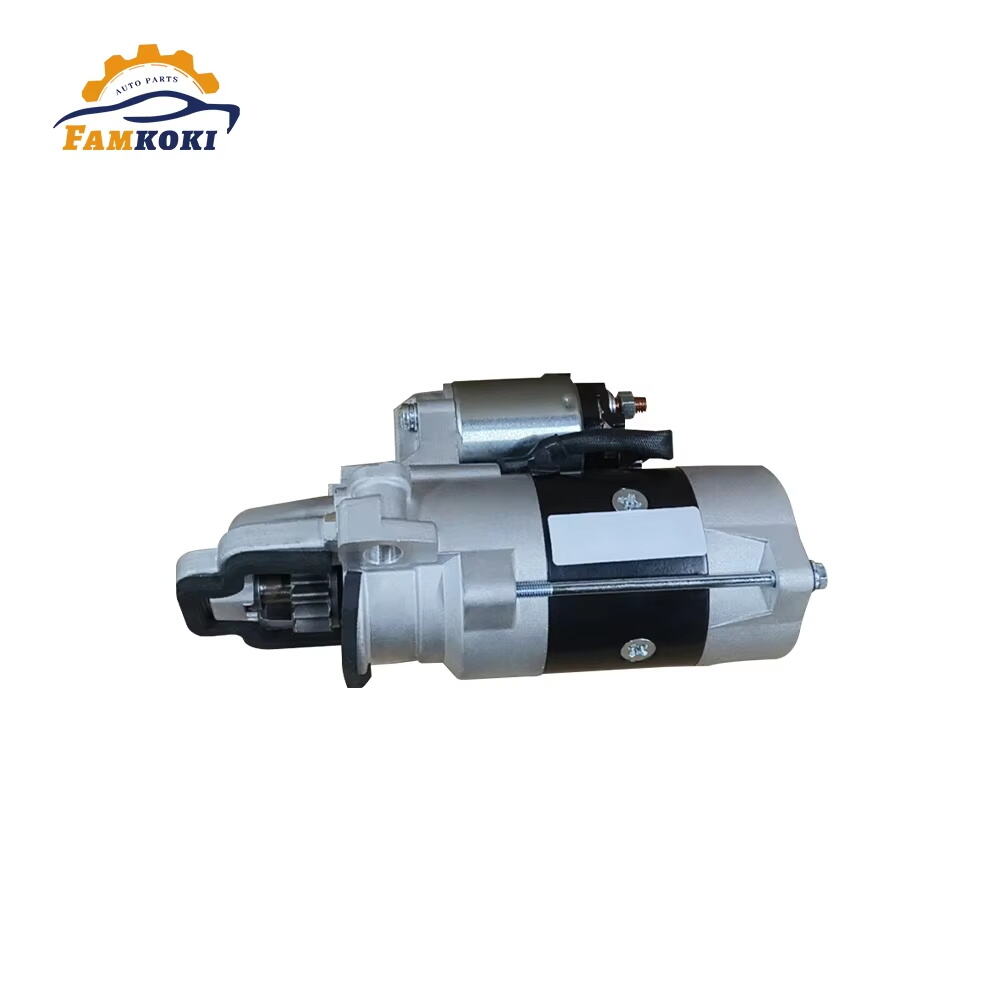Determine Your Vehicle's Electrical Power Needs
Understanding amperage requirements for vehicle electrical systems
Getting the right size alternator matters a lot for modern cars to avoid stressing out the electrical system. Most regular passenger cars generally run fine with around 50 to 70 amps handling all the basics. But when we're talking about bigger trucks that have extra lights or other power hungry accessories, those often need something closer to 120 amps or even more. When alternators aren't strong enough, they put extra pressure on the battery which just wears everything down faster than normal. To figure out what kind of alternator works best, grab a multimeter and check things out while driving under real conditions. Turn on headlights, crank up the air conditioning, anything that draws power normally during daily driving. This gives a much better idea of actual requirements instead of going purely by specs from manuals.
Vehicle's electrical demands and alternator output requirements
Calculate total electrical draw by summing individual component needs:
- Headlights: 8–12 amps
- Heated seats: 4–8 amps per seat
- Infotainment systems: 5–15 amps
- Air conditioning: 10–30 amps
Add 20% to the total as a safety buffer. Vehicles with factory-installed turbos or hybrid systems often require 150+ amp alternators to maintain voltage stability during acceleration.
Using an alternator amperage calculator to determine power needs
Web based calculators make figuring out complicated electrical loads much easier since they take into account things like what's running at the same time, how much extra power the battery needs to store, changes in engine speed, and even weather related performance issues. Just plug in details about the car and all those extra gadgets people tend to install these days, and it will give an idea of what kind of alternator output is needed at minimum. Keep in mind though that when someone adds stuff like big speakers down below or a heavy duty winch on top, those alone might push the demand up anywhere from 40 to almost 100 extra amps compared to what came standard from the factory. That's quite a jump sometimes folks forget about when planning their electrical system upgrades.
List of high-draw electrical components affecting alternator size
Prioritize these power-hungry accessories when sizing your alternator:
- High-performance audio systems: +35–120 amps
- Off-road lighting bars: +20–50 amps
- Electric vehicle cooling systems: +30–70 amps
- Hydraulic suspension kits: +45–85 amps
This analysis forms the foundation for selecting the right alternator that balances immediate needs with future expansion capabilities.
Ensure Full Compatibility with Your Vehicle’s Specifications
Size and Fit of the Alternator for Specific Vehicle Make and Model
Finding the correct alternator starts by checking if it physically fits. Car makers build engine bays in all sorts of different ways, so dimensions matter a lot here. Always check those fitment charts provided by manufacturers to match up with the specific make, model, and year of the vehicle. Getting this wrong even slightly matters big time. A pulley that's off just a bit or brackets placed incorrectly will lead to headaches during installation or worse, parts wearing out faster than they should. We've seen plenty of cases where people skipped this step only to regret it later when things started failing prematurely.
Compatibility Between Alternator and Battery (Voltage, Amperage)
Getting the electrical system properly synced is absolutely essential if we want everything to work right. Most car batteries run on 12 volts DC, so the alternator needs to put out somewhere around 13.8 to 14.7 volts while the engine is running. When picking an alternator, it makes sense to match its amperage rating with what the battery can hold plus all the stuff that draws power from the vehicle. For cars with lots of electrical gadgets, anything pulling more than about 1,000 watts usually calls for an alternator rated above 150 amps. Otherwise, when multiple accessories are turned on at once, the voltage tends to drop, which can cause problems down the road.
Check Compatibility With OEM Mounting Brackets and Belt Systems
Mounting systems designed in factories generally offer good protection against vibrations and maintain stable temperatures during operation. When installing new components, it's important to check the bolt hole spacing on existing brackets these typically have around three to four attachment points and then match those dimensions with what comes in the replacement parts. Belt tensioners need special attention too because if they don't fit properly with the serpentine belt setup, the alternator might lose as much as 15% efficiency just from the pulleys slipping instead of turning smoothly. Original equipment manufacturer brackets tend to handle heat better than many alternatives, which makes sense considering studies show that when alternators run even 15 degrees Fahrenheit hotter than normal, their chances of failing go up by about 22%. That kind of temperature difference can really add up over time.
Evaluate Aftermarket Modifications and Their Impact on Alternator Choice
Impact of Aftermarket Modifications (Audio Systems, Lighting) on Alternator Requirements
Aftermarket upgrades like 2,000-watt audio systems or LED light bars can increase electrical demand by 30–50 amps beyond factory specs (Auto Engineering Institute 2023). These modifications force the alternator to work 60% harder during peak usage, risking voltage drops below 12.4V—the minimum threshold for stable battery charging.
Assessing Power Demands of Aftermarket Accessories
Use this priority checklist when evaluating accessories:
- Continuous Load: High-draw items like winches (80–400 amps)
- Intermittent Use: Auxiliary lights (15–30 amps)
- Always-On Systems: Security trackers (0.5–3 amps)
Manufacturers’ amp-hour ratings often underestimate real-world consumption—test with a clamp meter during actual operation.
Electrical System Compatibility With Upgraded Alternators
High-output alternators (≥ 220 amps) require three critical compatibility checks:
- ECU communication protocols for voltage regulation
- Battery’s absorption rate capacity
- Wiring gauge adequacy (6 AWG minimum for 150+ amp systems)
Mismatched setups can cause cascading failures—17% of alternator replacements stem from incompatible upgrades (2023 Fleet Maintenance Report).
Industry Paradox: High-Output Audio Systems vs. Factory Alternator Limitations
While premium car audio competitions showcase 5,000-watt systems, 78% of vehicles come with 90–150 amp alternators incapable of sustained 70% output. This forces a critical choice: install dual alternators (requires custom bracketry) or use lithium auxiliary batteries with smart isolators—a $900–$2,000 solution that 43% of enthusiasts abandon within 12 months due to complexity.
Compare OEM vs. High-Output Alternators for Performance and Reliability
Differences Between OEM-Stock and High Output Alternators
OEM (Original Equipment Manufacturer) alternators match factory specifications for voltage (typically 12–14.4V) and amperage, ensuring seamless compatibility with your vehicle’s stock electrical system. High-output alternators, designed for upgraded power demands, feature:
- 6-phase stator windings (vs. 3-phase in OEM models) for higher current generation
- 12-diodes in rectifiers (vs. 3–6 in OEM units) to reduce heat buildup
- Internal cooling fans absent in most stock alternators
These enhancements allow high-output models to deliver up to 300 amps—triple the output of average OEM units.
When to Upgrade: Signs Your Stock Alternator Can’t Meet Demand
Upgrade to a high-output alternator if your vehicle exhibits:
- Dimming headlights at idle
- Frequent battery warnings despite new batteries
- Delayed accessory response (power windows, heated seats)
These symptoms often indicate your OEM alternator struggles to power aftermarket additions like amplified sound systems or auxiliary lighting.
Performance Benefits and Trade-Offs of High-Output Models
High output alternators can charge batteries anywhere from 30 to 50 percent quicker and maintain steady voltage even when the vehicle is pulling heavy loads. This matters a lot for trucks equipped with winches or refrigeration units that drain power constantly. The downside? These alternators typically run two to three times the price of standard OEM replacements. Plus there's usually some extra work involved too. Most installations need better quality wiring, careful pulley alignment, and folks often forget about checking those voltage regulators regularly. Regular OEM alternators are built for everyday reliability on the road, but high output models shine in tough situations where power demands spike. Just remember to pair them with batteries and charging systems that can actually handle all that extra capacity or else you'll end up chasing problems down the highway.
Frequently Asked Questions
What factors should I consider when choosing an alternator?
Consider the vehicle's electrical demands, compatibility with your battery's voltage and amperage, and ensure the alternator fits within the engine bay's dimensions.
How do aftermarket modifications affect my alternator choice?
Aftermarket modifications like high-power audio systems and LED lighting can increase electrical demand significantly, requiring a higher-output alternator to maintain stability.
Why might I need a high-output alternator?
High-output alternators are necessary when the stock alternator cannot support additional electrical loads without causing performance issues such as dimming headlights or frequent battery warnings.
How can I calculate my vehicle's electrical draw?
Sum up the individual amperage requirements of all electrical components and add a 20% buffer to ensure the alternator can handle peak loads.
 EN
EN
 AR
AR
 FR
FR
 KO
KO
 PT
PT
 RU
RU
 ES
ES


